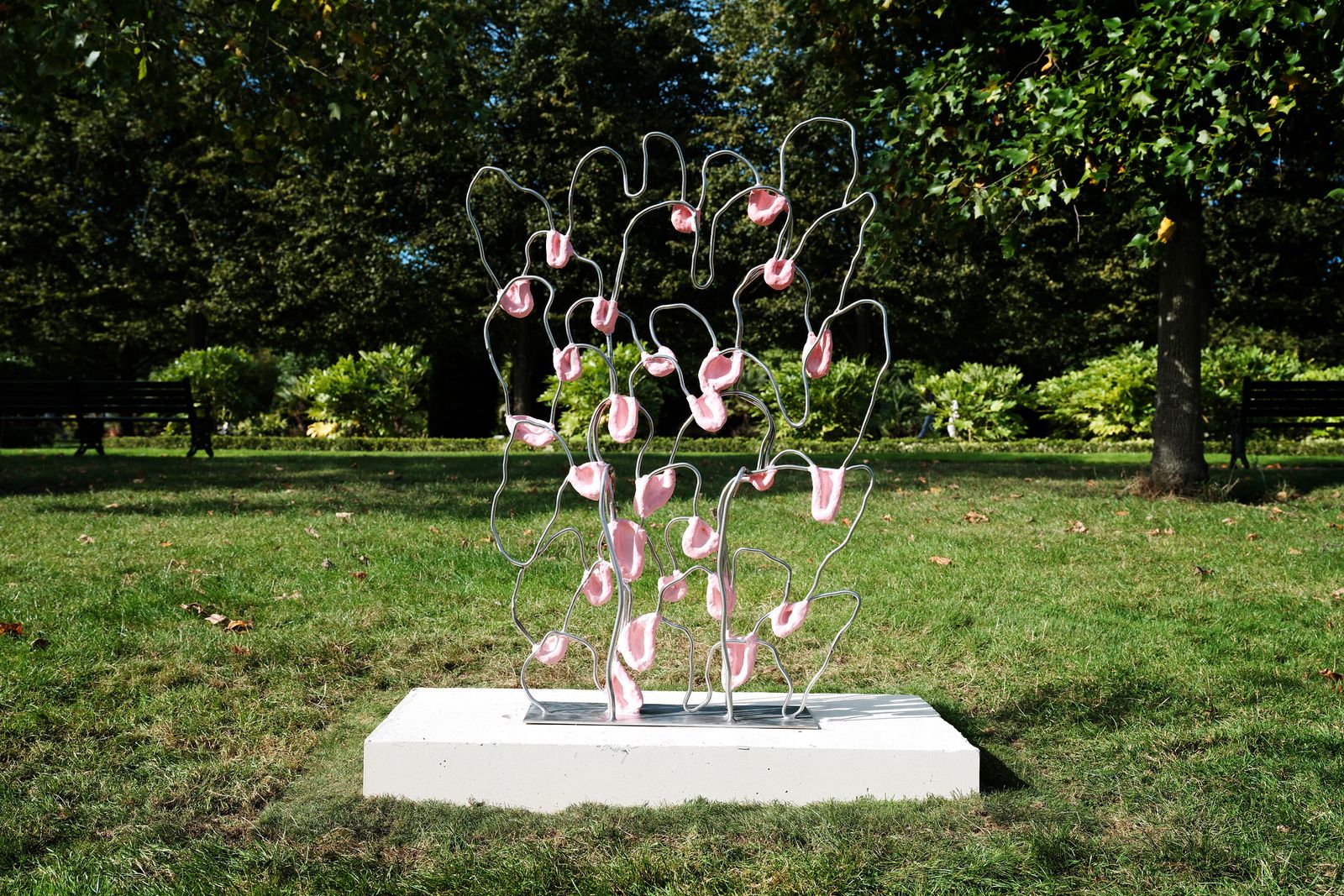
Dream Tree Planter, 2023 by Zhang Enli
Zhang Enli is known for painting the familiar yet overlooked, bringing a prolonged look through painting to things that might otherwise appear significant. The Chinese artist has painted everything from public toilets to ashtrays, items he is drawn to by instinct and finds poetry on. Rooted in figuration, these objects, fragments and moments are then magnified and transformed, inspired by the subject’s ‘essence’ rather than it's physical presence. This painting, Tree Planter (2023), a two-metre oil work on canvas, is an example of Enli’s attentiveness to the prosaic and the minutiae of life, his narrative titles subtly directing the viewer towards his inspiration. The painting also marks Enli’s shift towards gestural abstraction since 2019, moving deeper into the psychological space of portraiture.” In the beginning, I worked from objects to lines. These lines were specific, like electrical cables and iron wires. But once they were depicted, I found them hard to define. It’s not easy to separate the abstract and the figurative. This has led me to where I am today. In my mind, the abstract and the figurative are not separate. Their boundaries are blurred”, the artist has said.
Share











